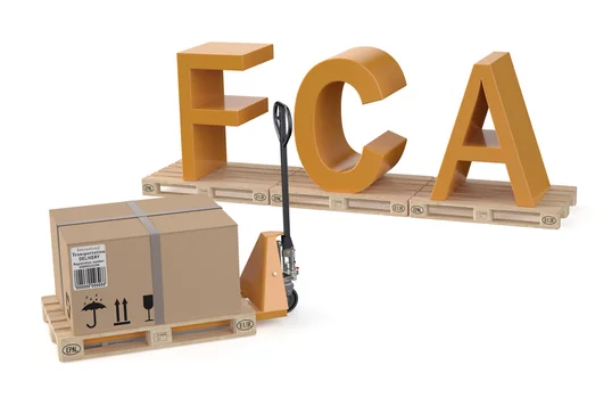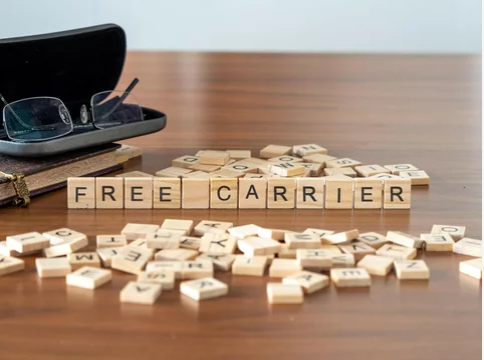Let’s dive deeper into the specific responsibilities of each party, the differences in the delivery location, and how this Incoterm works in various scenarios:

1. Seller's Responsibilities in Detail
Under FCA (Free Carrier), the seller has several important obligations:
Arranging Goods for Delivery: The seller must prepare the goods and package them appropriately according to the agreed standards or as per commercial practice. The goods must be ready for delivery to the carrier chosen by the buyer at the designated location.
Export Customs Clearance: One of the seller’s key responsibilities is handling export customs clearance. This includes obtaining necessary export licenses, preparing customs documentation, and paying any applicable export duties or taxes. This step is crucial, especially in international trade, as it ensures that goods can leave the country legally.
Loading Responsibility (Location-Dependent):
At the Seller’s Premises: If the buyer's chosen location is the seller’s warehouse, factory, or another place controlled by the seller, the seller is responsible for loading the goods onto the carrier’s vehicle.
At Another Agreed Location: If delivery occurs at a terminal, port, or a place not controlled by the seller, the seller is only responsible for delivering the goods to the agreed point. Loading the goods onto the vehicle is the responsibility of the carrier or buyer unless specified otherwise.
Providing Documentation: The seller must provide the buyer with all necessary documentation, including the commercial invoice, proof of delivery, and any documents required for export, to facilitate the transfer of ownership or enable customs clearance.
Risk Transfer: The seller bears the risk of loss or damage to the goods until the moment they are delivered to the carrier at the agreed location. After that, all risks are transferred to the buyer.
2. Buyer’s Responsibilities in Detail
Selecting the Carrier: The buyer must nominate a carrier or transport company to collect the goods from the agreed location. This gives the buyer control over the logistics and allows them to choose a cost-effective or trusted shipping method.
Arranging Main Transportation: After the seller delivers the goods to the carrier, the buyer assumes full responsibility for organizing the transportation from the point of delivery to the final destination. This includes paying the carrier for the transportation and ensuring that the goods arrive at their destination.
Risk Assumption: From the moment the goods are handed over to the carrier, the buyer assumes the risk for the goods. If the goods are damaged or lost in transit, the buyer must bear the cost, unless an agreement for insurance is made.
Import Customs Clearance: The buyer is responsible for managing all formalities in the importing country, including obtaining necessary licenses, paying customs duties, and ensuring compliance with local regulations.
Insurance (Optional): While FCA does not require the seller or buyer to insure the goods, the buyer is usually advised to arrange insurance for the goods from the point of delivery onward, as they bear the risk during transit.

3. Delivery Locations: Detailed Scenarios
a. Delivery at the Seller’s Premises (FCA Seller’s Warehouse or Factory)
If the delivery takes place at the seller’s own premises (e.g., a factory, warehouse), the seller is responsible for loading the goods onto the carrier’s truck or vehicle. Here, the seller handles packaging and ensures the goods are loaded securely, after which the risk and responsibility for the goods transfer to the buyer.
b. Delivery at a Different Agreed Location (FCA Port or Terminal)
In some cases, the agreed delivery point may be a location other than the seller’s premises, such as: a shipping terminal, an airport, a rail yard, or a border post. In this scenario, the seller arranges and pays for the transport of the goods to the agreed location. However, the seller does not have to load the goods onto the carrier’s vehicle at the terminal. The buyer or the carrier is responsible for loading. Once the goods reach the location, the risk passes to the buyer.
4. Differences Between FCA and Other Incoterms
Under EXW (Ex Works), the seller has the least responsibility. The buyer handles everything, including loading the goods at the seller’s premises and clearing them for export. In contrast, under FCA, the seller must handle export clearance and deliver the goods to the carrier.
FCA vs. FOB (Free On Board):
FOB (Free on Board) is specific to sea and inland waterway transport, and the seller is responsible for loading the goods onto the ship. The risk passes to the buyer once the goods are loaded. FCA, on the other hand, is more versatile and can apply to any mode of transport. The risk passes to the buyer when the goods are handed over to the carrier, not when they are loaded onto the ship.
FCA vs. CPT (Carriage Paid To):
Under CPT (Carriage Paid To), the seller arranges and pays for transportation to the agreed destination. However, risk transfers to the buyer as soon as the goods are handed over to the carrier, similar to FCA. The main difference is that in CPT, the seller is responsible for the cost of transportation, whereas under FCA, the buyer bears that cost.
5. Insurance Under FCA
Insurance is not automatically included under FCA. However, given that the risk transfers to the buyer as soon as the goods are handed over to the carrier, it is highly recommended that the buyer purchases insurance to cover any potential risks during transit. For example, if the goods are damaged in transit, the buyer will have to bear the loss unless insurance is in place.
6. Practical Example of FCA in Use
Let’s say a company in the United States buys electronics from a manufacturer in Japan. The buyer nominates a freight company to pick up the electronics from a shipping terminal in Tokyo. Under FCA, the seller (manufacturer) is responsible for delivering the electronics to the Tokyo terminal, clearing the goods for export, and providing the necessary documentation. Once the goods are handed over to the freight company at the terminal, the buyer assumes responsibility for the goods, including the risks during sea and onward transportation to the U.S.
7. Advantages of FCA
Flexibility in Transport Modes: FCA applies to all modes of transport—land, air, sea, or multimodal. This versatility makes it suitable for various types of shipping arrangements.
Clear Risk Transfer: The point at which risk passes from seller to buyer is clearly defined, reducing the likelihood of disputes over who is responsible for the goods at any given point.
Control for the Buyer: The buyer has control over selecting the carrier and arranging transportation, which can result in cost savings or better logistical control.
Seller's Responsibility for Export Clearance: FCA places the responsibility for export clearance on the seller, simplifying the process for the buyer and ensuring compliance with export regulations.
Conclusion
FCA (Free Carrier) is a versatile Incoterm that fits well with modern, multimodal shipping practices. It gives the buyer significant control over transport logistics, while still requiring the seller to handle export procedures and deliver the goods to the buyer’s designated carrier at an agreed location. This Incoterm is widely used in various industries because it provides a clear division of responsibilities and risk transfer, making it a practical choice for many international transactions.